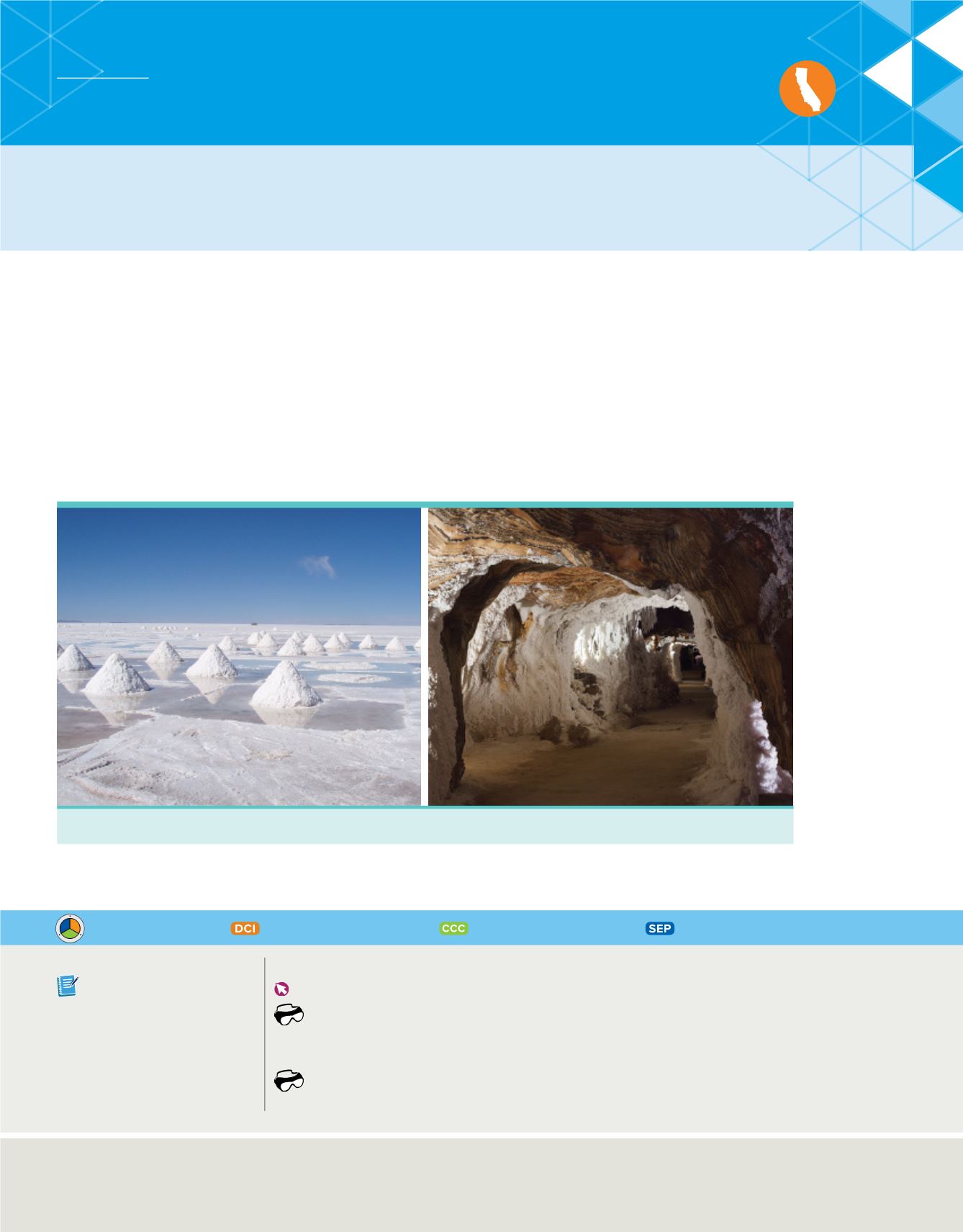

(l)Elad Sharon/Flickr RF/Getty Images, (r)Iakov Filimonov/Shutterstock.com
Salt from a mine
Salt from the sea
Figure 1
Harvested from the sea or extracted from a mine, salt always has the same composition.
Substances
As you know, matter is anything that has mass and takes up space. Everything around
us is matter, including things that we cannot see, such as air and microbes. For
example, table salt is a simple type of matter that you are probably familiar with.
Table salt has a unique and unchanging chemical composition. Its chemical name is
sodium chloride. It is always 100% sodium chloride, and its composition does not
change from one sample to another. Salt harvested from the sea or extracted from a
mine, as shown in
Figure 1
, always has the same composition and properties.
FOCUS QUESTION
What are the differences between physical and
chemical properties?
LESSON 1
PROPERTIES OF MATTER
Disciplinary Core Ideas
Crosscutting Concepts
Science & Engineering Practices
3D THINKING
C
C
C
S
E
P
D
C
I
COLLECT EVIDENCE
Use your Science Journal to
record the evidence you collect as
you complete the readings and
activities in this lesson.
INVESTIGATE
GO ONLINE
to find these activities and more resources.
Laboratory:
The Density of Wood
Plan and carry out an investigation
to determine the
patterns
in mass and volume of different
types of wood.
Identify Crosscutting Concepts
Create a table of the
crosscutting concepts
and fill in examples you find as you read.
48
Module 2 • Matter—Properties and Changes









